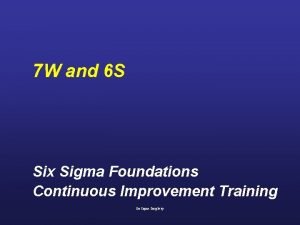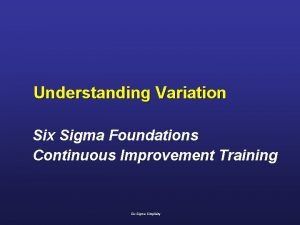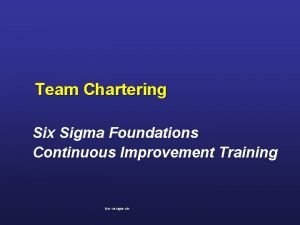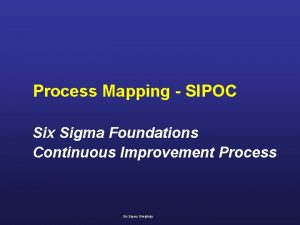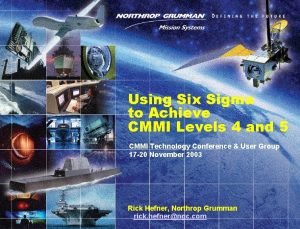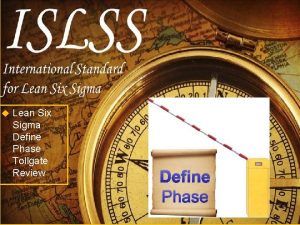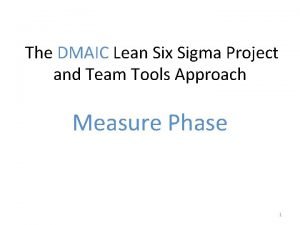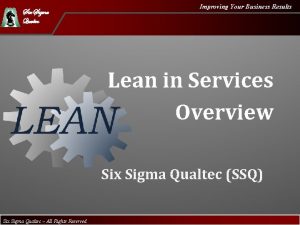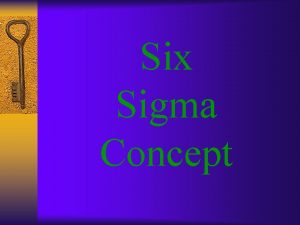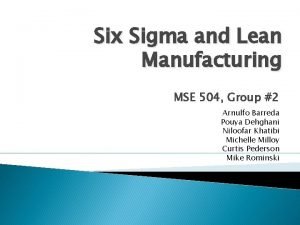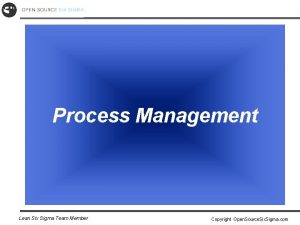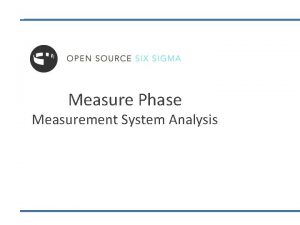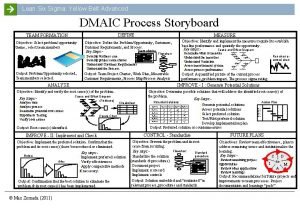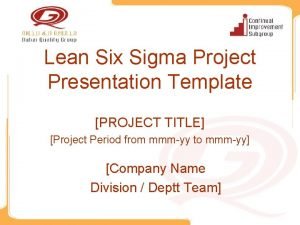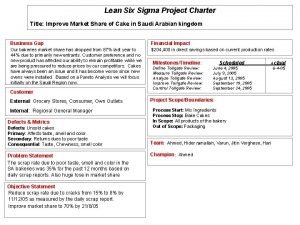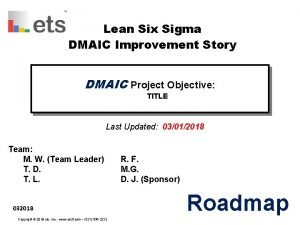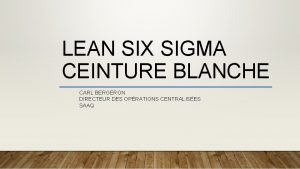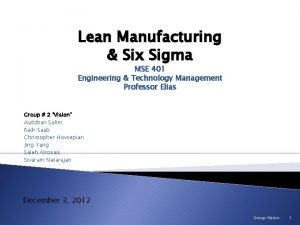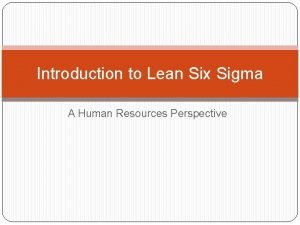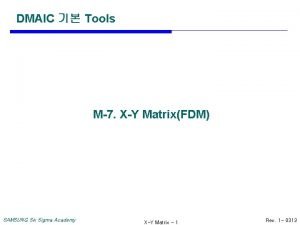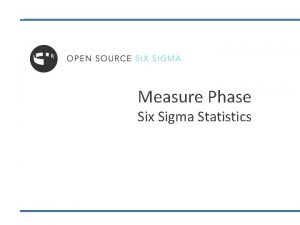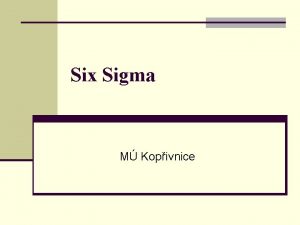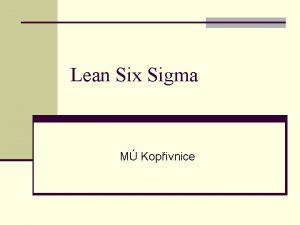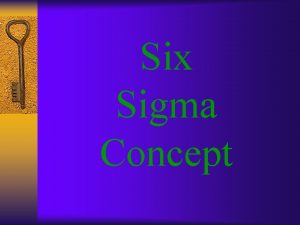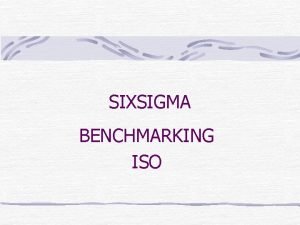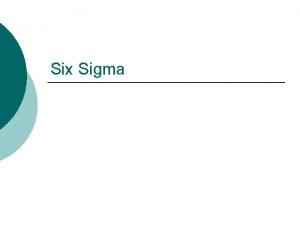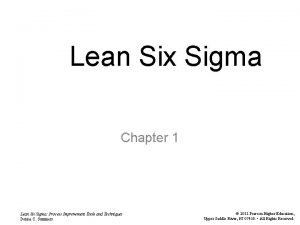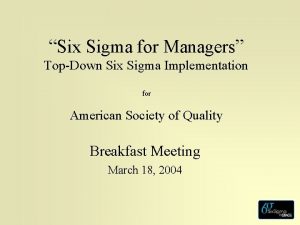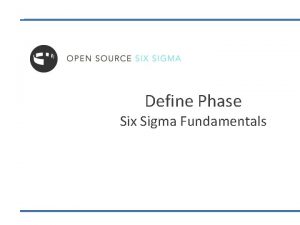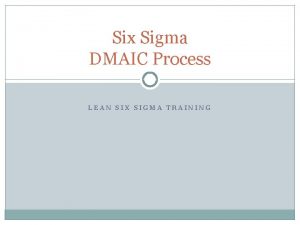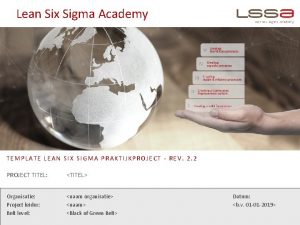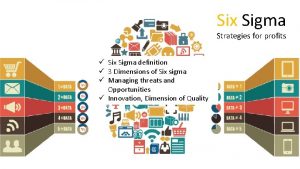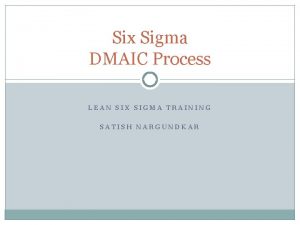7 W and 6 S Six Sigma Foundations






























- Slides: 30

7 W and 6 S Six Sigma Foundations Continuous Improvement Training Six Sigma Simplicity

Key Learning Points s The Enemy – Waste s The Foundation – 6 S Six Sigma Simplicity

Model for Six Sigma Performance Empowered People Six Sigma Tools and Process Lean Tools and Process 6 S and Waste Elimination Six Sigma Simplicity

Objectives For Addressing Waste Defining waste s Identifying sources of waste s Planning elimination of waste s Establishing permanent controls to prevent the recurrence of waste s Six Sigma Simplicity “MUDA”

Types of Waste Overproduction Rework/Scrap/Defects Waiting Motion Transportation Inventory Overprocessing Six Sigma Simplicity Formatting and Layout© 2000 Growtth Consulting, Inc. All Rights Reserved

Rework / Scrap / Defects Correcting or repairing a defect in materials or parts or correcting a processing error adds unnecessary costs because of additional equipment and/or labor expenses. Six Sigma Simplicity

Overproduction Producing more parts or work than are necessary. Producing parts or work at a faster rate than is required. Six Sigma Simplicity

Overprocessing Processing work which is unnecessary because it has no connection with advancing the line or improving the quality of the product Six Sigma Simplicity

Transportation is not something that directly contributes any added value to the product. It is an incidental action. It must be avoided unless supplying items where and when they are needed . Six Sigma Simplicity

Inventory is a drain on an organization’s overhead. The greater the inventory, the higher the overhead costs become Excess inventory covers up: * Defective material in finished goods * Unacceptable changeover times * Excessive downtime * Process inefficiencies * Lack of urgency and priorities Six Sigma Simplicity

Motion Any movement of people or machinery which does not contribute added value to the product Six Sigma Simplicity

Waiting Idle time between operations or events Six Sigma Simplicity

Group Exercise Take 10 minutes to think about a particular process within your project and list one example of waste for each of the 7 types. Be prepared to discuss as a group. Six Sigma Simplicity

6 S Workplace Organization Six Sigma Foundations Continuous Improvement Training Six Sigma Simplicity

The Purpose of 6 S s Improve safety s Increase quality s Remove waste from workplace s Provide reduction in non-VA activities s Create an environment for Continuous Improvement Six Sigma Simplicity

The 6 S Activities s Sort: Seiri (separate) s Straighten: Seiton (put in order) s Shine: Seiso (shine, clean) s Standardize: Seiketsu (standards) s Safety: Anzensei (safety) s Sustain: Shitsuke (discipline) Six Sigma Simplicity

Sort Identify all items within the work area which are not required to perform the process. Remove those items from the work area. BEFORE Six Sigma Simplicity AFTER

Straighten Any items identified “as required” must be assigned a specific location. This location should be identified by outlining and/or labeling the item and its location. Six Sigma Simplicity

Shine All dust, dirt, waste, etc. must be cleaned or not allowed to accumulate in order to set a new level of cleanliness and tidiness in the workplace. Cleanliness / tidiness not only provides a safe work area, it also highlights potential hazards. Six Sigma Simplicity

Standardize The ultimate workplace organization s Result of establishing acceptable standards for Sorting, Straighten and Shine s Clear and visual control of an acceptable level s Policy Statements Visual Indicators Location Maps Continual emphasis upon Sifting, Sorting, Sweeping Six Sigma Simplicity

Safety Increased safety is a result of standardization: Sort - The removal of unwanted items creates space Straighten - A place for everything ensures a safe location Shine - Cleanliness not only provides a safe work area, it also highlights potential hazards Six Sigma Simplicity

Sustain Individual commitment to the maintenance of the 6 S standards The toughest “S” to achieve and maintain! Active participation in setting improved standards Monitor, Acknowledge & Feedback Six Sigma Simplicity

Typical Levels of Assessment s Level E s s Level D s s Aisles, equipment and materials are identified Non-required tools and fixtures removed from workplace Required tools and fixtures are identified and assigned a visible location Level B s s s No debris in working area WIP Organized No obsolete stock; parts are labelled (including defects) Level C s s Disorganized and dirty Parts and rubbish on floor and bins Shelves cluttered with newspaper, lunch, obsolete stock All small tools are identified and located for immediate access 6 S standards are maintained with direction from supervision Level A s s 6 S standards are maintained without supervision Operators are searching for opportunities to improve Six Sigma Simplicity

Level E Disarray: s What is required? What is not required? s Potential damage to WIP s Potentially hazardous to operator Six Sigma Simplicity

Level D s Some organization is apparent s Cannot tell what is / is not required Six Sigma Simplicity

Level C s Organized and identified s Obvious when missing Six Sigma Simplicity

Level B s Clean, neat, tidy s Safe, no hidden dangers to worker or WIP s Process problems obvious at a glance Six Sigma Simplicity

Level A s Standards are visible s Workers maintaining standards s Workers seeking out opportunities for improvement Six Sigma Simplicity

Group Exercise Take 10 minutes to think about a particular process within your project and list one example of where you could apply 6 S workplace organization. Be prepared to discuss as a group. Six Sigma Simplicity

7 W and 6 S Six Sigma Foundations Continuous Improvement Training Six Sigma Simplicity
 6 s sigma
6 s sigma Six sigma foundations
Six sigma foundations Lean six sigma foundations
Lean six sigma foundations Sipoc exercise
Sipoc exercise Sigma sigma phi vcom
Sigma sigma phi vcom Edward via college of osteopathic medicine auburn
Edward via college of osteopathic medicine auburn Cmmi six sigma
Cmmi six sigma Pilot plan template six sigma
Pilot plan template six sigma Voice of customer six sigma
Voice of customer six sigma Statapult exercise instructions
Statapult exercise instructions Who is this
Who is this Six sigma qualtec
Six sigma qualtec Six sigma forum
Six sigma forum Six sigma kpov
Six sigma kpov Mse six sigma
Mse six sigma Project storyboard six sigma
Project storyboard six sigma Six sigma belts hierarchy
Six sigma belts hierarchy Statistical notation
Statistical notation Measurement system analysis
Measurement system analysis Dmaic storyboard
Dmaic storyboard Pilot plan template six sigma
Pilot plan template six sigma Charter lean six sigma
Charter lean six sigma Dmaic problem solving
Dmaic problem solving Carl bergeron
Carl bergeron Mse six sigma
Mse six sigma Kaizen total quality management
Kaizen total quality management Kanban six sigma phase
Kanban six sigma phase Six sigma kpov
Six sigma kpov Lean six sigma hr
Lean six sigma hr Sony six sigma
Sony six sigma Xy matrix
Xy matrix
